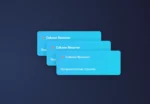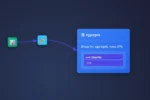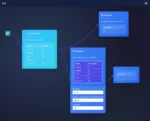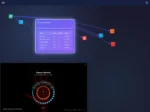
by tyler garrett | Jun 25, 2025 | Data Visual
Imagine stepping into a store and effortlessly finding everything exactly where you expect it to be—the aisles feel intuitive, products entice from the shelves, and the environment gently guides you toward purchases. This seamless customer journey isn’t just luck; it’s a precise science powered by insightful retail space analytics. Leveraging data-driven insights combined with cutting-edge Power BI consulting services, retail analytics transforms traditional store layout optimization from guesswork into an exact process. Let’s unpack how harnessing data and analytics reshapes store layouts, enhances consumer experience, and significantly improves retail profitability.
Why Retail Space Analytics Matters for Your Store Layout
In retail, every square foot counts. Your store layout shapes customer movement, affects decision-making, and directly impacts your bottom line. Emerging technologies like real-time tracking, predictive analytics, and advanced data visualization provide powerful tools to reevaluate space usage strategically. For instance, using intuitive data visualization tools, you can effectively monitor shopper behaviors, identify high-traffic areas, or detect bottlenecks causing friction in customer experience.
Analytics offers insights beyond traditional sales data. By blending transactional history, in-store navigation tracking, and consumer demographics, you gain a dimensional view of shopper preferences and habits. Consider mapping heat zones where consumers linger, versus locations commonly ignored. These visuals illustrate powerful insights, highlighting opportunities for improved product placement or space reallocation. Greater clarity comes through advanced visualizations like Voronoi treemaps for hierarchical visualization, providing immediate understanding of sales performance against square footage.
Retail analytics also empowers predictive modeling decisions, allowing store managers to forecast customer responses to layout adjustments before physically moving merchandise. By executing informed changes, retailers improve customer satisfaction, increase dwell time, and ultimately boost revenue outcomes. This compelling shift from intuitive decisions to data-driven strategies is vital in the increasingly competitive brick-and-mortar retail landscape today.
Understanding the Customer Journey Through Location Analytics
Taking full advantage of location analytics means diving deeper into customer in-store interactions and their adjacent digital footprint. By understanding how customers navigate physical spaces and how these interactions compare against transactional data, companies attain a granular view of customer intent and behaviors. In-store sensors, beacon technology, and Wi-Fi analytics offer powerful capabilities to trace exact consumer movements, dwell time, and attention hot zones precisely.
Location analytics integrated with your sales and transactional databases provides robust correlation insights. Leveraging efficient database management practices like SQL BETWEEN Operator range filtering, analysts quickly drill down to pinpoint transactions correlated with specific store areas or product displays. Combining in-store positional data with demographic segmentation further sharpens personalization possibilities, leading to more targeted in-store experiences or marketing.
Beyond pure sales and revenue improvements, deeper location analytics directly enhance customer experience. Retailers who thoroughly understand their shoppers’ paths can strategically adjust layouts—optimizing spacing, aisle widths, display positioning—to facilitate effortless and enjoyable shopping journeys. As impressive case studies highlighted in “From Gut Feelings to Predictive Models: A Client Journey” demonstrate, data-backed optimizations frequently result in enhanced customer loyalty and higher lifetime value.
Making Smart Decisions with Real-Time Store Analytics Dashboards
When it comes to capitalizing on retail space analytics insights, real-time dashboards are genuinely transformative. Real-time data provides immediate opportunities: responding rapidly to emerging trends, shifting customer flows, or promotional impacts. Retailers increasingly adopt real-time dashboarding solutions to aggregate live data streams into intuitive visual summaries. Such dashboards deliver actionable insights—not weeks later in retrospective reports—but as situations develop, allowing instant, informed decision-making on merchandise placement, staffing, and promotions.
Selecting the optimal real-time dashboard infrastructure matters significantly. Comparing visualization tools using resources such as our benchmark guide “Real-Time Dashboard Performance: WebGL vs Canvas Rendering Benchmarks” ensures your system is fast, responsive, and stable under real operational conditions. Dashboard responsiveness affects staff usability and action-taking efficiency—a critical factor when your team needs instant cues to adjust layouts during peak shopping periods.
Additionally, employing decluttering techniques for complex dashboard designs allow field managers and executives to access clear, streamlined visuals that remain meaningful amidst large datasets. With effective dashboarding practice, your store layout managers no longer rely solely on intuition. Instead, they confidently leverage instantly accessible data feedback to make say, fine-tuned adjustments or experiment with novel layout changes backed by quantifiable analytics.
Ensuring Secure and Compliant Retail Data Operations
As retailers increasingly rely on granular customer movement and transaction data, ensuring compliance and security of sensitive information becomes a critical priority. Adhering to robust regulatory frameworks such as GDPR, CCPA, and industry-specific guidelines helps retailers protect consumer privacy and mitigate risks. Our deep dive article around “Data Privacy Regulations and Their Impact on Analytics” underscores the necessity for compliant data handling practices, helping retailers balance powerful analytics with responsible privacy standards.
Retail space analytics involves substantial personal data—from purchase behaviors to navigation patterns. Implementing structured data governance and strict permission management approaches ensures only authorized individuals operate with this sensitive data. Using contemporary permission and access control practices such as attribute-based access control for fine-grained permissions helps retailers easily align analytics operations with required governance and compliance standards.
Furthermore, database-level security practices must align with your analytics infrastructure. By carefully granting SQL privileges and permissions, retailers minimize risks associated with unauthorized data access, loss, or breaches. Such careful security and compliance protocols reinforce your analytics capabilities, soothe customer privacy concerns, and fortify retailers’ reputations, setting the stage for long-term, scalable analytics solutions.
Building Sustainable Infrastructure for Retail Space Analytics
If your retail analytics strategy isn’t backed by scalable and reliable infrastructure, even powerful insights won’t achieve optimal effectiveness. Infrastructure modernization, leveraging advanced cloud solutions and embracing automated deployments, ensures your analytics capabilities remain agile, robust, and easily adaptable. Strategies and methods outlined in our guide “The Data Engineer’s Guide to Infrastructure as Code” underline automation’s power in rapidly deploying scalable analytics solutions tailored specifically for retail environments.
Infrastructure as Code (IaC) enables retailers to rapidly iterate and scale analytics practices consistently across multiple store locations. From small boutiques to global retail chains, automated infrastructure deployments facilitate quick adaptation to store-specific requirements based on real-time analytics feedback. Conveniently spinning up additional analytics environments for new retail locations, temporary pop-up stores, or seasonal expansions becomes vastly simplified.
Moreover, maintaining infrastructure through automation reduces operational overhead, improves reliability, and delivers tremendous agility in analytics capabilities. Retailers powered by agile infrastructure respond proactively to changing markets, consumer behaviors, and competitive dynamics. With robust infrastructure underpinning your analytics strategy, the transition toward data-driven retail layout optimizations becomes sustainable, scalable, and long-lasting—and ensures rapid innovation to meet evolving customer expectations.
Data-Driven Future of Retail Layout Optimization
No longer do successful retailers rely solely on gut instinct or traditional merchandising wisdom. Today and tomorrow’s leading retailers recognize data-driven layout optimization as pivotal to success. Retail space analytics represents a dynamic, continuously evolving practice capable of keeping retail store layouts customer-centric, engaging, and profitable.
Embracing analytics positions retailers to continuously innovate consumer shopping experiences, anticipate customer desires and challenges accurately, and gravitate toward strategic decisions that yield measurable impact. Partnering with experienced data analytics practitioners not only amplifies the quality of insights but also enables you to thoroughly integrate analytic capabilities—fueling sustainable growth well into the future retail landscape.
Ready to revolutionize your retail store layout using actionable insights? Explore our analytics solutions today and unlock the power of retail space analytics for lasting competitive advantage.
Thank you for your support, follow DEV3LOPCOM, LLC on LinkedIn and YouTube.

by tyler garrett | Jun 23, 2025 | Data Visual
In the rapidly evolving landscape of telecommunications, understanding the flow of data has become critical to maintaining competitive advantage. Your networks generate vast and complex volumes of data every moment, with hidden patterns holding the keys to superior performance, efficiency, and reliability. Network traffic visualization offers telecommunications providers and IT leaders the ability to uncover these hidden gems—illuminating the underlying dynamics of connectivity, optimizing resource allocation, and enhancing customer satisfaction. By diagnosing congestion, mapping traffic trends, and predicting potential network failures through intelligent visualization tools, your organization can stay up-to-date and strategically ahead of demand. Let’s explore how visualizing telecommunications network traffic can unlock exponential value for your decision-making, laying the foundation for data-driven innovation and breakthroughs in telecom analytics.
The Importance of Understanding Network Traffic Patterns
Today’s telecommunications networks host a continuously escalating number of devices and users who expect seamless connectivity and instant access to information. As network loads increase, accurately capturing and interpreting traffic data becomes crucial not only for operational stability but also for maintaining a superior consumer experience. Traffic visualization transforms this raw data into meaningful insights that expose underlying business-critical patterns, allowing telecom providers to eliminate bottlenecks, optimize bandwidth allocation, and provide stable network experiences consistently. Well-executed visualization is fundamental: it takes granular and complicated data and makes it understandable for decision-making executives and technical strategists alike.
Recognizing unusual patterns or spikes in network usage using sophisticated visualization techniques helps organizations quickly identify potential cybersecurity threats or suspicious activities, such as DDoS attacks or data breaches. Visual analytics allow telecom providers to respond proactively, instigating rapid interventions to mitigate risks. Additionally, through detailed trend analysis, telecom analysts can identify growth areas, potential network weaknesses, and predict future load projections with reliable accuracy—creating a strategic advantage and ensuring that telecommunication infrastructure stays a step ahead of customer needs.
With network traffic visualization, telecommunications decision-makers gain clarity. They can actively manage network resources, prioritize upgrade investments efficiently, and promptly detect issues before they escalate into costly downtime. By investing in network visualization analytics, telecom operators leverage their greatest asset—their data—to maximize value and enhance their competitive edge in today’s fast-paced digital ecosystem.
Leveraging Real-Time Traffic Visualization for Proactive Decision-Making
Modern telecom companies must navigate ever-increasing demands for rapid, reliable connectivity. Real-time network traffic visualizations deliver immediate insights that empower telecommunications managers to make informed and proactive decisions. Instead of relying on historic data alone—which often becomes obsolete due to sudden shifts in data demand—real-time visualizations provide continuous monitoring, capturing current events and irregularities as they unfold. With real-time analytics, telecom providers instantly spot unusual spikes, sudden increases in congestion, or abrupt traffic drops that might signal network outages or disruptions.
Real-time visualization dashboards seamlessly integrate with other analytical processes and data systems. For instance, building a responsive dashboard interface using frameworks such as Streamlit and Apache Kafka provides telecommunications stakeholders instant visibility into their network performance. Learn more about this integration approach from our recent article on Building a Real-Time Dashboard with Streamlit and Kafka. Incorporating these real-time capabilities into your analytics infrastructure ensures high availability, minimized downtime, and reduced operational incidents, significantly improving the end-user experience.
Additionally, detailed real-time analysis supports resource allocation strategies, enabling telecom managers to dynamically reposition bandwidth or reassign network capacity based on shifting usage trends. Armed with up-to-the-second visibility into their infrastructure, telecom organizations can drastically reduce latency, remove performance roadblocks, and improve overall network reliability.
Advanced Techniques for Enhanced Visualization and Analytical Accuracy
Sophisticated visualization software and advanced analytical methods are elevating telecommunications network traffic analysis to unprecedented heights. Utilizing artificial intelligence (AI) and machine learning (ML) techniques within your analytics pipeline can dramatically boost accuracy, simplify complex datasets, and provide predictive insights for better planning. Network providers increasingly leverage advanced algorithms to detect correlations or anomalies hidden from manual inspection through traditional visualization methods.
These advanced techniques help mitigate risks posed by inference attacks on sensitive data—a critical concern when visualizing and publishing telecom datasets. Explore methods to safeguard sensitive information in-depth by reading our article on Inference Attack Prevention in Published Datasets. Coupling sophisticated analytics with data security best practices ensures organizations can confidently utilize and share data visualizations safely without compromising security compliance.
Furthermore, telecom operators benefit significantly from automated data testing strategies integrated into their analytic processes. Testing automation helps achieve data integrity, ensuring visualization results accurately reflect actual network states. Our detailed overview of this topic, Automated Data Testing Strategies for Continuous Integration, provides essential knowledge for telecom companies seeking greater analytical reliability.
Building Comprehensive Visualization Capabilities for Customer Insight
Telecommunications traffic contains invaluable insights into customer behavior, preference, and loyalty. By visualizing traffic and customer interactions across telecom networks, businesses can build comprehensive identity graphs, which allow highly personalized and tailored customer engagement. To quickly master identity graphs, telecom strategists can reference our resource on Identity Graph Construction for Customer Data Integration. These visualizations unlock a new level of precision in targeted marketing campaigns and improve customer retention analytics, significantly boosting the bottom-line.
Effective visualization capabilities enable telecom providers to respond dynamically to changing consumer demands. By clarifying customer preferences and needs, telecom companies can design effective business strategies and customer-oriented service experiences, reinforcing client satisfaction and brand loyalty. Clear visibility of customer data flows allows telecom carriers to compete on customer experience, proactively anticipating customer requirements and delivering unparalleled service.
Additionally, future-proofing your telecom analytics system requires staying abreast of emerging trends and shifting data analysis paradigms. For an insightful outlook on future data trends, explore our research-focused guide titled The Future of Data: Predictions for the Next 5 Years.
Establishing Robust Notification Systems for Proactive Traffic Management
As visualization systems uncover valuable traffic insights, robust and automated notification systems enable telecom providers to respond immediately to actionable insights. Notification systems trigger alerts when certain thresholds are met, congestion points arise, or network disruptions are detected—ensuring rapid troubleshooting and enabling quicker recovery times, minimizing the impact on end users. Prioritize setting up strategic notification channels to deliver critical data reports instantly to stakeholder devices and decision-makers’ inboxes.
Streamlining communication and transparency by using automated notification frameworks enhances overall customer experience and lowers operational costs. Dive deeper into implementing efficient notifications by exploring our detailed guide on Notification Systems for Pipeline Status and Alerts. The integration of proactive notification capabilities guarantees telecommunications organizations stay informed, reducing issue detection and remediation latency, increasing network uptime, and contributing to stronger client trust and satisfaction.
Intelligent notifications extend network visualization effectiveness beyond static dashboards into real-time operational environments, creating streamlined, continuous communication channels between telecom operations teams, executive leadership, and network field technicians. Facilitating rapid internal coordination ensures immediate, action-oriented insights, enhancing overall telecom agility and resilience.
Empowering Telecom Providers Through Advanced Visual Analytics
In a hyper-connected world, robust visualization and analysis of telecom network traffic no longer represent optional capabilities—they’ve become essential strategic assets. High-performing telecom organizations relying on expert visualization analytics can seamlessly adapt to emerging trends, proactively predict customer needs, identify potential threats promptly, and deploy their infrastructure more intelligently. Now is the time to revolutionize your analytics strategy and unlock the capability visual networks enable.
As specialists in data analytics and innovation, our experienced team provides end-to-end solutions leveraging industry-leading tools to help telecom businesses thrive. Learn more about our tailored approach and how we leverage analytics and visualization to drive strategic telecom initiatives on our Power BI consulting services page. Future-proof your telecommunications network management capabilities, enrich customer understanding, and ensure your enterprise continuously stays ahead of competitors with advanced data visualization and powerful analytics.
Thank you for your support, follow DEV3LOPCOM, LLC on LinkedIn and YouTube.

by tyler garrett | Jun 18, 2025 | Data Visual
In the era of unprecedented data generation, organizations that capture, understand, and quickly act on customer feedback gain a strategic advantage. Today’s customers interact with businesses through numerous digital touchpoints, from social media to customer service emails, each touchpoint generating insights ripe for visualization. Real-time Voice of Customer (VoC) feedback dashboards combine advanced analytics, robust enterprise-scale data management, and state-of-the-art visualization techniques to empower decision-makers with timely and actionable insights. These dashboards not only enhance customer experiences and satisfaction, but fortify brand longevity and market agility. In this blog post, we will explore how real-time feedback visualization goes beyond traditional reporting, leveraging cutting-edge technologies and agile design approaches to turn raw feedback into powerful strategic decision-making tools.
The Significance of Real-Time Voice of Customer Dashboards
Gone are the days when monthly spreadsheets or quarterly reports were sufficient methods for understanding customer sentiments. We’re witnessing a paradigm shift: real-time Voice of Customer dashboards offer businesses the proactive capabilities to detect emerging customer trends or issues the moment they arise. Leveraging technologies like Natural Language Processing (NLP) and sentiment analysis, organizations now process qualitative and quantitative data streams seamlessly and almost instantly.
Real-time dashboards present decision-makers with live updates on customer feedback collected from reviews, social media channels, surveys, chat interactions, and more. This continuous stream of actionable information helps trained customer service teams identify and address customer pain points rapidly, and product teams can proactively adapt their offerings to suit shifting market preferences. By shortening the feedback loop between customer sentiment and action taken, companies foster stronger customer relationships, increased loyalty, and ultimately higher revenues.
Additionally, instantaneous feedback visualization helps marketing teams to identify resonating messages and campaigns swiftly. Resources aren’t wasted on ineffective strategies; rather marketing efforts can dynamically align with real customer motivations. The fundamental takeaway is clear—the closer an organization moves toward real-time customer feedback visibility, the greater its capacity for responsive strategic decisions.
How Visualization Enhances Customer Feedback Interpretation
Data alone, without effective visualization, frequently appears overwhelming rather than informative. The magic behind robust VoC dashboards lies within intuitive visualization methods, transforming complex datasets into digestible, visually appealing, and insightful information. Techniques include sentiment analysis visualizations, heat maps, trend line charts, journey mapping, and comparative dimensional analyses—all allowing leaders an immediate comprehension of customer narratives in real-time.
For instance, sentiment analysis visualizations, which frequently leverage machine learning libraries like the Natural Language Toolkit (NLTK), showcase consumer emotions either positive, negative, or neutral with easy-to-interpret symbols or graphic elements. Highly visual summaries of customer trends can prioritize urgent issues or rapidly highlight opportunities. Heat maps can efficiently illustrate highly-concentrated clusters of customer feedback about particular features or services, allowing organizations to pinpoint hot zones of attention immediately.
Furthermore, predictive analytics visualizations layered onto dashboards enable business leaders to foresee potential challenges proactively. By analyzing the velocity and pattern of feedback sentiment over time, predictive insights notify decision-makers to upcoming concerns or emerging consumer preferences. Such advanced visualization strategies, when implemented strategically, grant enterprises exceptional predictive and responsive capabilities, becoming crucial to the determination of market footholds.
Architecting Effective Real-Time Dashboards
Creating robust, meaningful, real-time VoC dashboards requires meticulous planning, technology expertise, and flexible backend architecture. Organizations typically leverage multiple technologies—including databases, streamlined generic pipeline templates, APIs, cloud computing, and visualization software—to maintain dashboard performance.
Real-time feedback ingestion demands well-designed data pipelines, often built on scalable cloud platforms to reduce latency. Utilizing modern tools such as API gateways and serverless functions further optimizes the ingestion and processing mechanisms. Additionally, a strategic polyglot persistence architecture—where organizations implement diverse database types optimized to handle varying data formats and latencies—can significantly enhance dashboard responsiveness and ensure data fidelity.
Also critical to the effectiveness of VoC analytics workflows is the design of your analytics backend. Having a high-performance backend, like Microsoft SQL Server solutions or similar enterprise-scale databases, guarantees efficient handling of real-time data streams while providing enterprise-class reliability, security, and scalability. With backend architecture optimized, dashboards become quick-loading, authoritative, and effective decision-support tools.
Importance of Human-in-the-Loop in VoC Dashboards
While technology is foundational to real-time feedback dashboards, the role humans play in interpreting and leveraging the insights remains indispensable. The combination of automation with a thoughtful application of human-in-the-loop data pipeline processes establishes the perfect synergy vital for agile responsiveness to changing market conditions.
Human-in-the-loop involves data analysts and user-experience experts who provide context, validate insights, and iteratively fine-tune methods. The continuous engagement of skilled analysts bridge gaps where pure automation might misinterpret nuance or overlook subtle shifts in customer perceptions. Human judgment is especially crucial to maintaining high accuracy levels, ensuring the actionable insights offered through dashboard visualizations remain trustworthy and relevant.
Moreover, involving people within analytics processes ensures transparency and enhances collaboration across organizational units. Aligning feedback with strategic objectives, experienced analysts contextualize complex data—converting them from abstract numbers into strategic business narratives. Thus, organizations can successfully integrate advanced analytics directly into decision-making processes arising from real-time VoC dashboards.
Establishing Strong Data Governance to Support Real-Time Analytics
Data governance not only increases data quality and consistency, but it also lays a robust foundation for successful real-time analytics. Businesses that aspire to flourish with real-time VoC dashboards require clearly defined data stewardship roles, policies, and frameworks—for instance, practicing comprehensive frameworks like federated data governance implementations across business units. Such a unified yet flexible approach ensures rapid, accurate response times and proper control mechanisms over sensitive customer data.
Instituting strong governance models clarifies data responsibilities and accelerates decision-making processes. Establishing robust governance removes barriers to efficient real-time analytics deployment. Defined governance helps: delineate clear roles, streamline reporting protocols, manage secure access, and provide transparent definitions of data assets—ultimately enhancing confidence in dashboard results across the enterprise.
The critical partnership between data governance teams, application developers, and business stakeholders results in trusted insights and reliable decision-making agility. Properly implemented governance ensures strategic data alignment, protects organizational reputation, and assures compliance. By embedding good governance into the analytics culture, businesses sustainably achieve and maintain competitive differentiation through trustworthy data-driven insights.
The Future of VoC Visualization
Real-time Voice of Customer visualization dashboards represent only the beginning of an accelerating journey towards more advanced, predictive, and immersive customer intelligence analytics. The increasing integration of technologies like artificial intelligence, deep learning, augmented analytics, and immersive data storytelling methods offer incredibly rich potential for further evolution within this exciting field.
Future dashboards might incorporate virtual or augmented reality interfaces, allowing leaders to conceptually immerse themselves directly into customer journeys, understanding issues and experience gaps on a near-personal level. Advances in streaming data solutions and progressively sophisticated NLP methodologies promise even finer-grained sentiment detection, categorized emotional nuance, and dynamic content interaction.
As dashboards advance, organizations must stay committed to continual innovation, flexible architecture, governance maturity, and agile analytics processes to maintain competitive advantages. By fully embracing a strategically designed, technology-driven roadmap toward advanced visualization, organizations can securely place customer perspectives on center stage—driving innovations tailored directly by consumer voices and continually outperforming market expectations.
Harnessing Customer Voices Effectively
Today’s most successful businesses have prioritized customer voices as their ultimate guide. Real-time feedback visualization dashboards bring clarity, immediacy, and invaluable insights—empowering leaders at every level of the organization. By prioritizing data governance, strategic human involvement, dynamic architecture planning, and innovative visualization strategies, your business can harness real-time VoC dashboards to achieve sustainable market success.
Ready to elevate your organization’s decision-making capabilities through data innovation and analytics? Partnering with experts like our team ensures your organization unlocks the full potential of powerful real-time data-driven outcomes—transforming your Voice of Customer initiatives from aspiration to reality.
Thank you for your support, follow DEV3LOPCOM, LLC on LinkedIn and YouTube.

by tyler garrett | Jun 18, 2025 | Data Visual
Imagine captaining your cruise line forward with remarkable precision—leveraging deep insights into passenger experience to transform every voyage into a tailored journey of delight. The cruising business sails smoothly only when operators seamlessly anticipate and respond to what passengers desire, expect, and ultimately enjoy. In this unparalleled age of data-driven decision making, sophisticated analytics coupled with clear visualizations empower cruise executives to identify opportunities, automate responses, optimize experiences, and highly personalize journeys. Gone are the eras of guessing at passenger preferences; take the helm confidently with powerful analytics at your fingertips. A robust visualization strategy not only charts a clear course through data complexity—it paves the path outright toward delighted passengers and increased profitability. Let’s explore the profound impact of cruise industry analytics in passenger experience visualization and how innovators harness cutting-edge technology to gain competitive advantage in this dynamic marketplace.
Harnessing Real-Time Data Streams to Respond to Passenger Needs Instantly
The cruise industry’s operational complexity and high passenger volume generate massive quantities of data at every turn—from onboard activities, food and beverage preferences, shore excursions, and social interactions. Leveraging analytics, such extensive data pipelines, can now stream in real-time, enabling instantaneous responsiveness to enhance passenger experience. Visualizing data within rapid dashboards provides cruise lines and stakeholders critical insights—all accessible at a glance.
A real-time dashboard provides granular intelligence for decision-makers. Repeated issues can be shortened immensely by using streaming technologies to alert operators immediately when quality standards diminish or passenger satisfaction drops. Implementing real-time analytics solutions, such as dashboards built with Streamlit and Kafka, ensure all onboard departments—from dining to entertainment—stay attuned and adapt dynamically. This elevates passenger satisfaction exponentially, showcasing readiness for next-generation data operations.
Further, strategic analytics enable data canary deployments, ensuring quality even in production environments. Cruise line operators can learn more through strategically employing data pipeline canary deployments for testing in production, solidifying operational resilience and robustness.
The Power of Personalization through Feature Store Architecture
The varied tastes and expectations of cruise passengers make personalization a critical secret to elevating passenger experience. Cruise operators collect vast, diverse data from each interaction, but how do they seamlessly leverage machine learning (ML) to drive personalization at scale? These industry leaders have increasingly implemented sophisticated feature store architectures for ML Operations, bridging the gap between raw data and intelligent analytics.
Feature stores aid cruising companies in standardizing, cataloging, and rapidly deploying data features across machine learning models. Leveraging rich historical passenger behavior data helps operators create targeted offers, customize onboard engagements, and maintain responsiveness to predicted passenger preferences. Integrating such analytics into intuitive visualizations makes decisions seamless, intuitive—and most importantly—actionable.
Smart feature store architecture supports timely and consistent analytics-driven personalization. Cruise line decision makers see clearly visualized experiences in dashboards, enabling proactive adjustments that quickly adapt journeys to customer expectations on-the-go. With personalized customer offers, notifications, and recommendations continuously improving, cruise operators set the course for optimized passenger outcomes.
Achieving Data Optimization Through Efficient Dataset Sampling Techniques
Navigating a significant volume of data can quickly become overwhelming for cruise industry stakeholders. To make analytics meaningful and manageable, operators must employ smart dataset sampling techniques aimed at optimization. Sampling techniques serve to streamline analytics without compromising accuracy or meaningfulness, ensuring quick visualization and response.
Using optimized dataset sampling, cruise industry stakeholders can rapidly visualize and interpret customer behaviors and emerging preferences for operational efficiency. Analytics empowered by smart sampling strategies simplifies data accessibility and reduces complexity, allowing management teams to make confident decisions.
This scalable approach speeds up analytical processes, creating broad and clear visualizations from diverse data sets. With optimized sampling methodologies, operators quickly grasp emerging trends, passenger satisfaction issues, or logistical pain points before broader patterns interrupt operations or impact travelers negatively—creating smoother sailing and elevated experiences.
Innovative Visualization through Edge Computing Analytics
As analytics tools advance, they enable visualization not just at centralized data warehouses, but directly at the point data originates. Utilizing edge computing visualization and rendering analytics at the data source, cruise operators can reduce lag, save bandwidth, and enhance real-time passenger experience responses enormously.
With ships sailing across oceans, latency in communication affects onboard decisions significantly. With analytics deployed on cruise ships via advanced edge technologies, operators easily see visualizations of passenger usage patterns, popular amenities, or operational bottlenecks directly onboard. These near-instant rendering visualizations empower immediate actionable insights, significantly enhancing onboard passenger experience.
The edge computing visualization approach also benefits remote management by allowing fleet-wide consistency. Analyzing insights directly at each data generation point results in accurate and timely feedback, enabling clear comparisons between operational areas or regions visibly represented. Thus, operators witness precisely how strategic actions impact passenger experience instantly, everywhere.
Transitioning to Cost-Effective Data Visualizations with Open Source Node.js
In the fast-evolving technology landscape, cruise industry decision-makers must identify cost-efficient yet impactful tools to achieve powerful analytics solutions. The shift from traditional drag-and-drop proprietary platforms towards open-source visualization solutions, especially powered by efficient node.js frameworks, enables cruise lines to achieve unmatched flexibility and cost-effectiveness, as detailed in this insightful piece on leveraging Node.js for data warehousing.
Open-source Node.js platforms empower cruise data teams to build highly customizable visual analytics solutions, rapidly translating customer datasets into actionable insights. Node.js visualization tools streamline operations and offer unrivaled customization for detailed insights tailored to cruising industry specifics—the flexibility modern executives require.
Adopting open-source technology allows cruise businesses to innovate rapidly and economically. With quick implementation, iterative improvements, and competitive advantages provided by modern visual analytic capabilities, cruise lines significantly elevate operational dashboards and bolster passenger-centric intelligence and improvements.
Building Trustworthy Analytics through Golden Record Management
Cruise industry stakeholders recognize the need to rely on trustworthy, high-quality analytics to shape the passenger journey. Often handling data incoming from multiple sources—bookings offices, onboard point-of-sale systems, mobile apps, and social review platforms—finding accord and accuracy can challenge even the most proficient operators. Implementing robust methods of golden record management in multi-source environments becomes essential to maintaining data integrity and reliability.
Golden records bring clarity and accuracy to customer experience visualizations, ensuring data-driven decisions align with reality. Cruise line decision-makers can trust visualized passenger experiences precisely match onboard activity, preferences, and pain points. These reliable analytics help operators eliminate redundancies, personalize journeys effectively, and validate operational strategies.
By refining passenger data into a single version of truth via consistent golden record management, cruise line stakeholders obtain reliable visual analytics fostering decisive, impactful actions. The result? Continued passenger trust, positive reputation management, and rapidly-contained customer experience issues within each voyage.
Set Sail With Smarter Data Analytics Today
Innovative cruise line executives must continually leverage sophisticated analytics and compelling visualizations to keep customers sailing happily and profitably. By effectively utilizing data engineering, analytics strategies, and visualization tools outlined above, companies position themselves far ahead in maritime passenger travel innovation. Your differentiation begins with improved data literacy and citizen-driven analytics implementation (explored here). Harness these strategies to elevate passenger experience, meet customer expectations proactively, and seize opportunities—distinguishing yourself clearly in a sea of competitors.
Thank you for your support, follow DEV3LOPCOM, LLC on LinkedIn and YouTube.

by tyler garrett | Jun 11, 2025 | Data Visual
In today’s hyper-competitive market, visually compelling and responsive real-time dashboards are no longer simply attractive enhancements—they’re mission-critical tools empowering strategic business decisions. Whether monitoring operational metrics in manufacturing, analyzing financial transactions for immediate insights, or enabling dynamic scenario-planning, organizations increasingly depend on dashboards that offer instantaneous interactivity at scale. As you evaluate technologies to build your next-generation dashboards, two prominent options stand out: WebGL and Canvas rendering. How do these two powerhouse technologies compare when it comes to performance benchmarks, usability, and maintaining advanced visualization capabilities? Let’s dive deep into a comprehensive benchmark analysis to help you confidently select the best solution for your real-time dashboarding needs.
Understanding WebGL and Canvas Technologies: A Brief Background
Before diving into benchmarks, it’s essential to first drive clarity regarding what WebGL and Canvas actually entail and why these technologies are so prominently used in contemporary dashboard analytics. The HTML5 Canvas API is a versatile, pixel-based drawing interface supported natively by today’s web browsers. Graphics drawn to the Canvas element are executed directly in JavaScript—making Canvas widely accessible and straightforward for developers familiar with JavaScript.
On the other hand, WebGL (Web Graphics Library), also browser-based, goes a step further by leveraging hardware-accelerated graphics through direct API interaction with your GPU via OpenGL ES. Designed specifically for rendering 2D and 3D graphics smoothly and efficiently, WebGL enables complex data visualizations at ultra-fast speeds—essential for handling real-time analytical dashboards with thousands or millions of data points.
Importantly, each of these rendering paths comes with inherent strengths suitable to different dashboard requirements. The sophistication of your project’s rendering workload, your users’ device capabilities, and your needed interactive features will influence your ultimate technology selection. By clearly defining your visualization goals upfront—potentially by leveraging design methodologies such as those discussed in a previous post on decluttering techniques for complex dashboard design—you set a solid foundation before benchmarking.
Benchmark One: Performance and Rendering Capabilities
WebGL: GPU-Powered Rendering Advantage
When it comes to raw performance, WebGL often emerges as the go-to solution for dashboards displaying large-scale data visualizations, real-time updates, and heavy interaction. Leveraging GPU acceleration means WebGL can smoothly render hundreds of thousands—often millions—of data points interactively and with minimal latency. Our test benchmarks have indicated that WebGL’s frame rates consistently outperform Canvas when corresponding to complex visualizations such as interactive heat maps, detailed network maps, and real-time simulations.
As demonstrated in our previous analysis of network visualization layout algorithms comparison, we observed significantly superior performance in terms of both rendering speed and interactivity when utilizing WebGL. Organizations needing seamless real-time simulation or efficient multi-dimensional visualization are strongly advised to consider WebGL for its unparalleled GPU-driven performance.
Canvas: Practical Simplicity for Moderate Use Cases
Despite WebGL’s superior performance, Canvas still offers compelling advantages, particularly in scenarios involving simpler dashboard presentations, lighter user interactions, and less demanding rendering workloads. Being run directly in JavaScript, Canvas rendering typically holds sufficient performance for basic charts, graphs, and lightweight visual representations. For standard monitoring metrics or typical business intelligence visuals—such as expiration rate charts in employee performance dashboards (the role of business intelligence in employee retention)—Canvas sufficiently balances performance and ease-of-use without extraneous setup complexity.
Benchmark Two: Development and Integration Complexity
WebGL: Higher Complexity, Increased Capability
WebGL’s powerful rendering capabilities do come at a cost: complexity in implementation and a steeper learning curve for developers. Developers need proficiency in GLSL (OpenGL Shading Language) and understanding of GPU pipelines. Debugging WebGL-based applications may prove challenging for teams unfamiliar with graphics programming or detailed GPU resource management. Optimal integration involves robust, often sophisticated architectures— such as discussed in our comparison of polyrepo vs monorepo strategies for data platform code management. Hence, using WebGL demands strategic preparation to ensure project success and operational maintainability.
Canvas: Accessible to Broader Developer Teams
Unlike WebGL’s complexity, Canvas leverages familiar JavaScript syntax, allowing easier integration with existing applications and lower training overhead. Developers skilled in JavaScript libraries typically transition easily into Canvas-based dashboard deployment, achieving efficient implementation without significant specialized graphics knowledge. This accessibility makes Canvas ideal for agile teams focusing on rapid prototyping, iterative development, and quick deployed visualizations. Teams prioritizing speed to market and reducing technical barriers frequently prefer Canvas’ practical simplicity.
Benchmark Three: Scalability and Interaction Handling
Scalability Benchmarks Favor WebGL for Robust Data Visualizations
When aiming for scalability—where seamless handling of large-scale data is paramount—WebGL shines prominently. Organizations implementing large-scale data visualization initiatives, such as those involving vast analytics for predictive modeling, proactive scenario planning, or complex spatial analysis, readily benefit from WebGL’s hardware acceleration capabilities. For instance, when propagating complex data classification tags during transformations—as discussed thoroughly in our guide on propagating data classification tags through transformations—scalability vis-à-vis animation fluidity and interactivity demands robust visual technologies, thus favoring WebGL.
Canvas Demonstrates Limited Scalability and Interaction Support
While Canvas adequately supports moderate real-time visualizations, it can notably struggle under significantly more demanding visual workloads, particularly where interactivity involves frequent redraws or complicated transformations. Since its rendering process is software-driven, performance quickly diminishes as complexity grows. Teams aiming to ensure user responsiveness may encounter limitations when dashboard complexity exceeds Canvas’ practical rendering capacities. Businesses unveiling intricate dashboards with multifaceted filter interactions or data artifacts may therefore encounter contention with Canvas-based scalability.
Making the Optimal Choice: WebGL or Canvas?
Ultimately, making a strategic technology selection between WebGL and Canvas depends heavily upon your dashboard objectives, data complexity, interaction density, and development team’s technical skillset. For dashboards requiring intricate 3D visualizations, continuous animations, or extreme rendering speeds—WebGL represents an unrivaled choice for high-performance visual analytics. Meanwhile, organizations prioritizing rapid prototyping, developer accessibility, and less complex interactivity may comfortably deploy effective Canvas-based dashboards.
Critical to the decision-making process is evaluating these technologies through the lens of future strategy—considering data architecture alignment (such as outlined in our detailed comparison of data mesh vs data lake), cost efficiency concerning development time, and ongoing technical sustainability and scalability. Particularly when supplementing dashboard visualizations with analytical capabilities like cardinality estimation technologies for data analytics management, reviewing each rendering technology in context makes strategic sense.
Engaging with seasoned consulting services, such as Dev3lop’s dedicated AI and dashboard consulting services, provides clarity and targeted expertise to confidently select and implement your next-generation dashboarding solutions effectively, aligning them seamlessly with your organizational strategy and operational excellence targets.
Conclusion: Strategic Visualization Drives Your Competitive Advantage
Your choice between WebGL and Canvas encapsulates more than mere technical preference—it directly leverages your organization’s competitive advantage in making strategic and operational decisions. As revealed by benchmark insights, WebGL’s GPU-accelerated strength fits seamlessly with high-volume data visualization scenarios demanding extraordinary speed and fluid user experiences. Canvas, conversely, fuels accessible, agile visualizations that facilitate team ideation and rapid iterations. Clearly defining your dashboarding vision with approaches like tracing dashboards with Figma and Power BI ensures these visualizations resonate precisely with stakeholders’ needs—driving decisive, strategic outcomes through industry-leading dashboarding excellence.
Thank you for your support, follow DEV3LOPCOM, LLC on LinkedIn and YouTube.





























